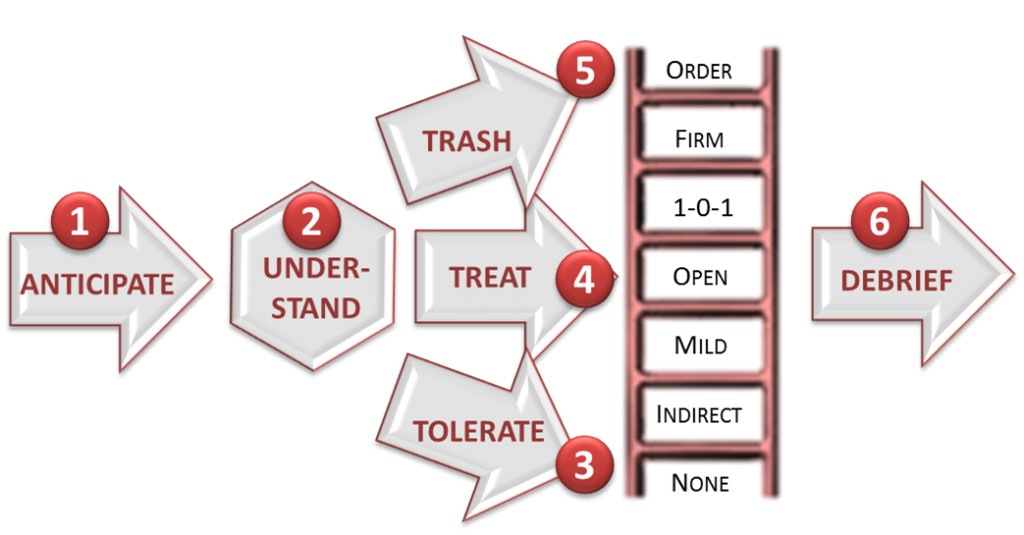The meeting is supposed to start now. Yet half of the participants are not present. And the present half is more busy with finding coffee, chatting or checking their emails. Latecomers at their worst, distractors at their best. Mild dysfunctional behavior? Mild maybe but repetitive and costly!
And then, in the middle of your well-thought process, one stands up and thinks you should be doing differently, putting your process into question and suggesting alternative ways to proceed. And another starts telling an endless story about how it has been done in the past. Process interferers at short, storytellers at length. Serious dysfunctional behavior? Serious and damaging…
Do you want to know how to handle DYSFUNCTIONAL BEHAVIOR?
Now let’s be clear here: there are solutions. A generic solution that works – that always works when properly used. And additional specific solutions, that work for specific situations. Take the latecomer: deal silently with him/her; avoid justifications, remind of groundrules, have a one-on-one at the first break (and lock the door next time!). Or take the process interferer: block him/her; establish yourself as the only guardian of the process, yet take his/her input at break, and explain why (during and) after the meeting.
These are just a couple of examples of the 16 typical dysfunctional characters we meet at work. For each of them there is an ‘antidote’ for instant use (and in most cases for a long term ‘cure’). But before learning how to deal with the specific characters (which we’ll do in our next newsletter – stay tuned!) let’s first have a look at the generic approach we suggest.
THE ‘GENERICS’
The best way to handle dysfunctional behavior is a stepped approach, both over time and over intensity of your interventions.

First, anticipate. Identify potential dysfunctional people (while preparing the meeting). Use dry-run or intake interviews to preempt the behavior. Give them specific meeting roles and/or adapt your script to limit the danger.
Next understand. Try to understand the reason of the behavior; put yourself in the other’s shoes and put the other’s behavior in a broader context (to avoid out-of-context judgments). If possible, act based on the gained insights.
Then tolerate. You can decide not to intervene and tolerate the behavior if the consequences are acceptable and short-lived. Show patience and caring. Be aware though that this is a ‘weak’ alternative: the dysfunctioning is not addressed.
Treat the behavior using the following techniques progressively. (a) Use your body language: move closer, hand palms down on shoulder,… (b) Ask gently to calm down or pause silently while looking. (c) Name the drama plenary: direct, explicit; keep it short and move on. (d) Break and have a ‘one-on-one’: be explicit on undesired behavior; explain rationale and consequences on the group; offer alternative; praise cooperation. (e) Ask to stop behavior (be directive); if worse, name groundrules broken; if worse, ask the person how it feels to break the rules, to be dysfunctional…
Trash: give an undiscussable directive instruction to the dysfunctional person. This step is relevant in hierarchical situations or in large groups.
Finally, debrief. Learn your lessons: did you do the right ‘handling’? Mitigate consequences: debrief constructively with the dysfunctional person and with any key stakeholders if need be (his boss, your boss,…)
THE ‘SPECIFICS’
Now let’s get back to our specific dysfunctional characters. We have identified 16 of them. And as we said, there is a solution for each one of them, a practical and effective solution.
See our other insight (How to handle dysfunctional characters?) for all the details…
And in the meantime start practicing!
If you would like to know more about this topic, or if you have a difficult meeting with high stakes coming up, contact us!
